STEM Education: A taste of research for K-12 teachers
The REACT workshop pairs U-M researchers with K-12 science educators to introduce primary school teachers to new laboratory science and classroom-friendly activities.
 Enlarge
EnlargeOn June 22nd, 2018, the University of Michigan hosted the second annual Research Education and Activities for Classroom Teachers (REACT), a workshop aimed at connecting University of Michigan researchers with K-12 science educators. This year’s event brought together 10 departments from across the university, including more than 50 professors and student researchers, and 53 K-12 STEM teachers from across Michigan.
The goal of the workshop is to introduce teachers to the cutting edge of today’s laboratory science and also offer classroom-friendly activities that go beyond the standard science labs, such as DNA extraction and the making of hydrogels.
Penelope Johnson of Hutchinson @ Howe in Detroit, MI, wrote, “There was SO much valuable information! Everyone was focused, excited, and totally consumed with making sure we understood, comprehended, and could ask questions. I loved it!”
The workshop was coordinated by three Macromolecular Science and Engineering students—Rose Cersonsky (Glotzer Lab), Alyssa Travitz (Larson Lab), and Ayse Muniz (Lahann Lab)—supported by the Center for Educational Outreach. They held the first REACT workshop last year.
Cersonsky credits her mother, a fifth grade teacher, for inspiring her to create REACT. “My relationship with my mom showed me what the relationship between science education and research can be. Researchers benefit from teachers’ advice in communication and conveying new ideas, and in turn we should open the doors to the magical world of science in which we live. But not every teacher has a PhD student for a kid.”
Researchers benefit from teachers’ advice in communication and conveying new ideas, and in turn we should open the doors to the magical world of science in which we live.
Rose Cersonsky
The pilot workshop brought in 19 teachers, all within an hour of the U-M campus. For this year, Cersonsky, Travitz, and Muniz decided to expand REACT. They sought sponsorship from professors and departments so that teachers could attend the workshop at no cost. And word got out about the program, so even though there were more than double places available compared to the first year, the team had to turn down another 25 or so applications from teachers. Some teachers drove six hours round-trip to attend.
The workshop started off in the North Campus Research Complex (NCRC) with presentations from six invited speakers, which can be found on YouTube:
- “My Journey to Computational Materials Research”
- Bradley Dice, (Physics, Glotzer Lab)
- “How a Shrimp and a Surgeon Might See Eye to Eye”
- Brian Iezzi (Materials Science and Engineering, Shtein Lab)
- “Modeling Camera Effects in Images to Improve Autonomous Vehicle Vision”
- Alexandra Carlson (Robotics, Robotics Institute)
- “Brain-Machine Interfaces: Toward Scalable High Resolution Neural Interfaces”
- Amin Sandoughsaz (Electrical Engineering Najafi Lab)
- “Analyzing Access to Healthcare with Operations Research Tools”
- Adam van Deusen (Industrial and Operations Engineering, Cohn Lab)
- “An Intro to Neurogenetics Research: How Scientists use Genetics to Learn about Brain Development and Function”
- Christina Vallianatos (Human Genetics, Iwase Lab)

 Enlarge
Enlarge
Teachers were able to visit one of the University of Michigan’s many research facilities, including the MCity vehicle testing facility, Lurie Nanofabrication Laboratory, Space Physics Research Laboratory, or the art gallery in the Dana Building focused on combining art and the environment. Some teachers hitched a ride on the autonomous shuttle.
Following lunch, teachers broke into eight groups, each focused on one discipline and tailored to a smaller range of grade levels. The groups were:
- Grades K-4: Environmental Sciences, Materials Science and Engineering
- Grades 5-8: Climate and Space Sciences and Engineering, Electrical Engineering, Robotics
- Grades 9-12: Chemical Engineering, Human Genetics, Physics
In each of these tracks, teachers were treated to individualized lab tours across the entire university. Benjamin Lee (Resource and Ecology Management, Ibáñez Lab) guided the teachers through Nichols Arboretum, tying in his research on trees and their response to climate change. Mayank Agrawal and Simon Adorf (Chemical Engineering, Glotzer Lab) demonstrated their work on computational science and programmable nanobots.
In total, teachers visited 17 research lab spaces across eight disciplines.
Kyla Gurganus, of Lincoln High School in Ypsilanti, MI, wrote, when asked if she would recommend the program: “Yes, we never get to meet/see actual research and researchers/labs, and I did that today!”
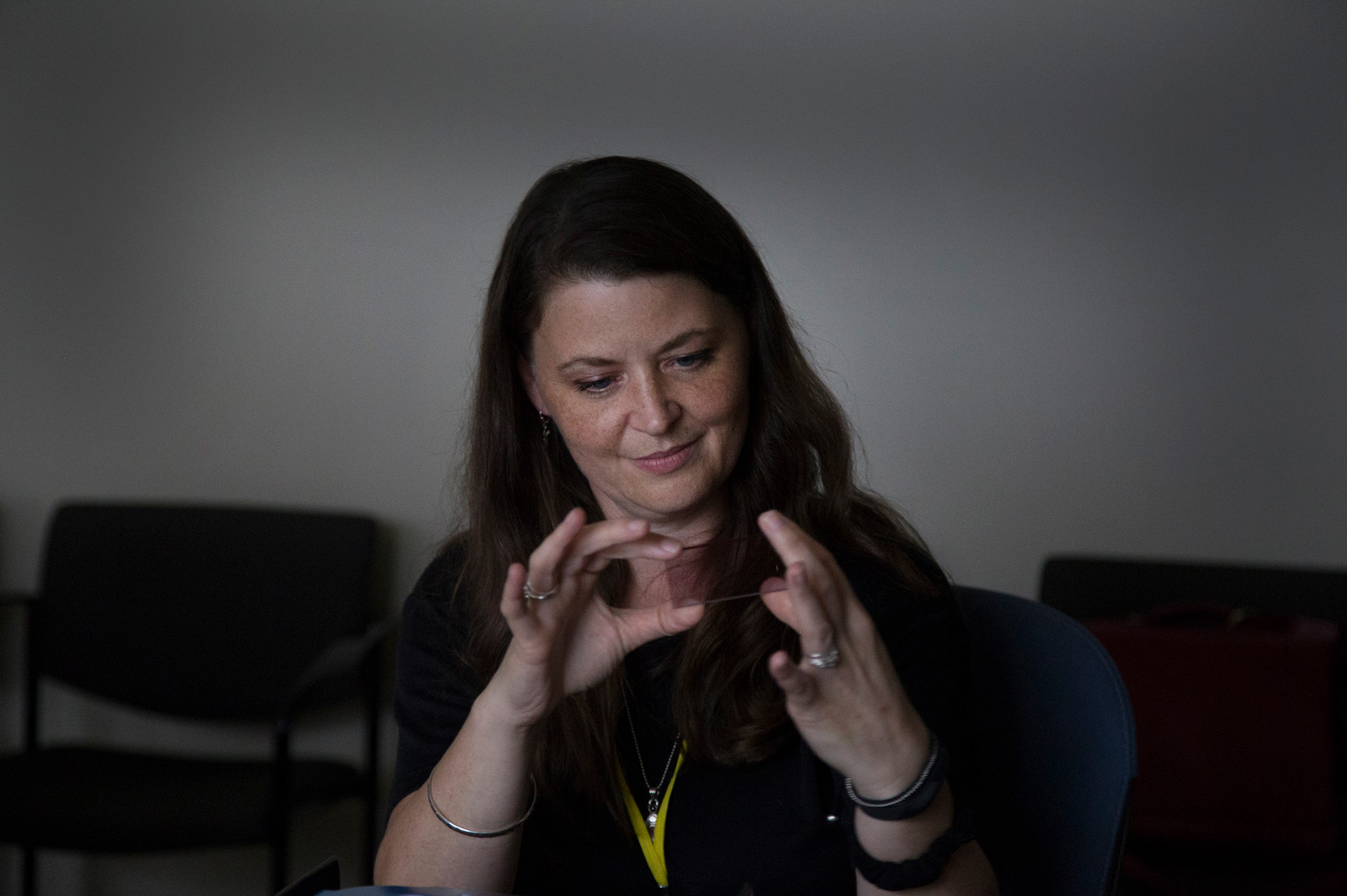

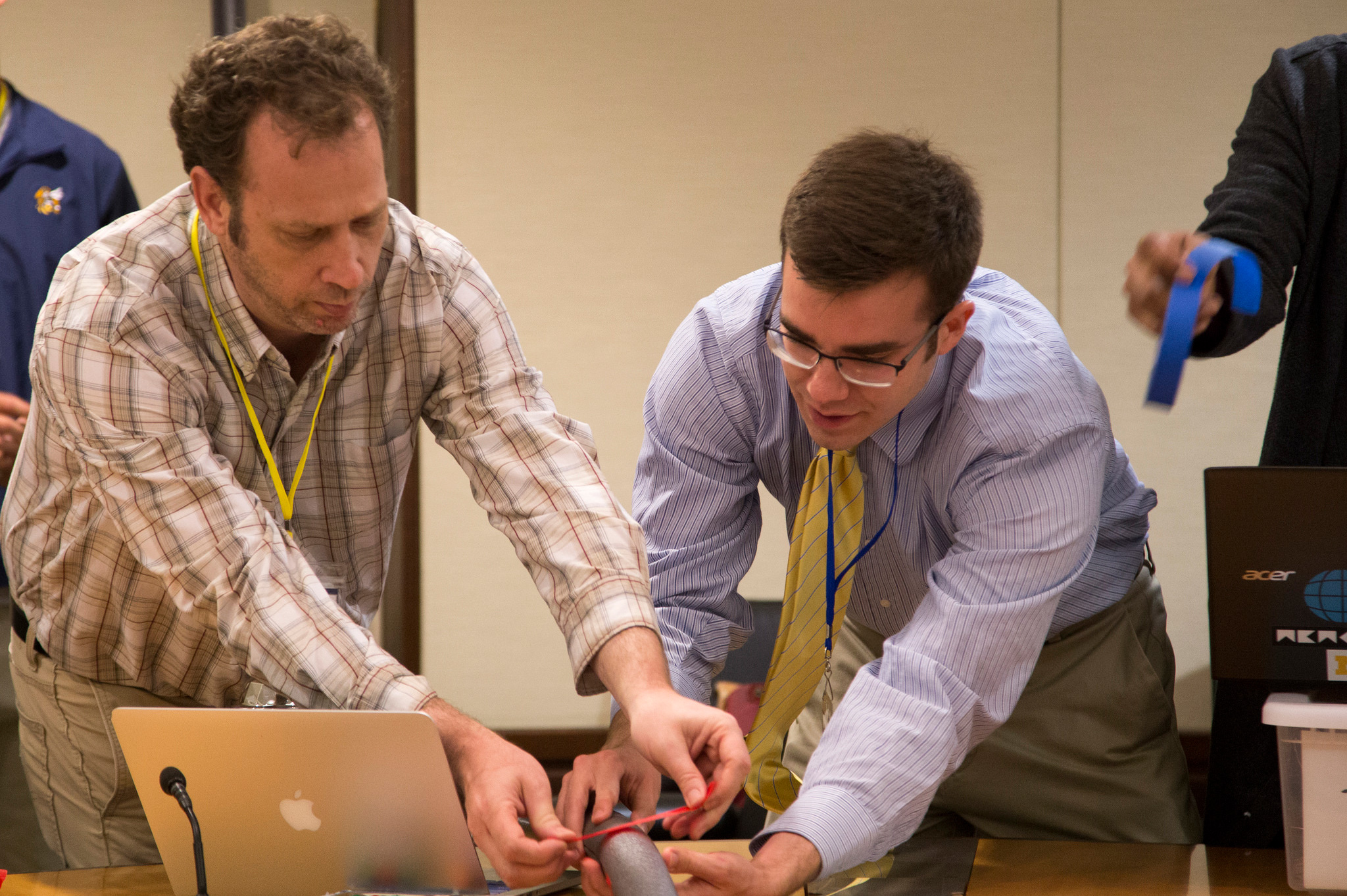
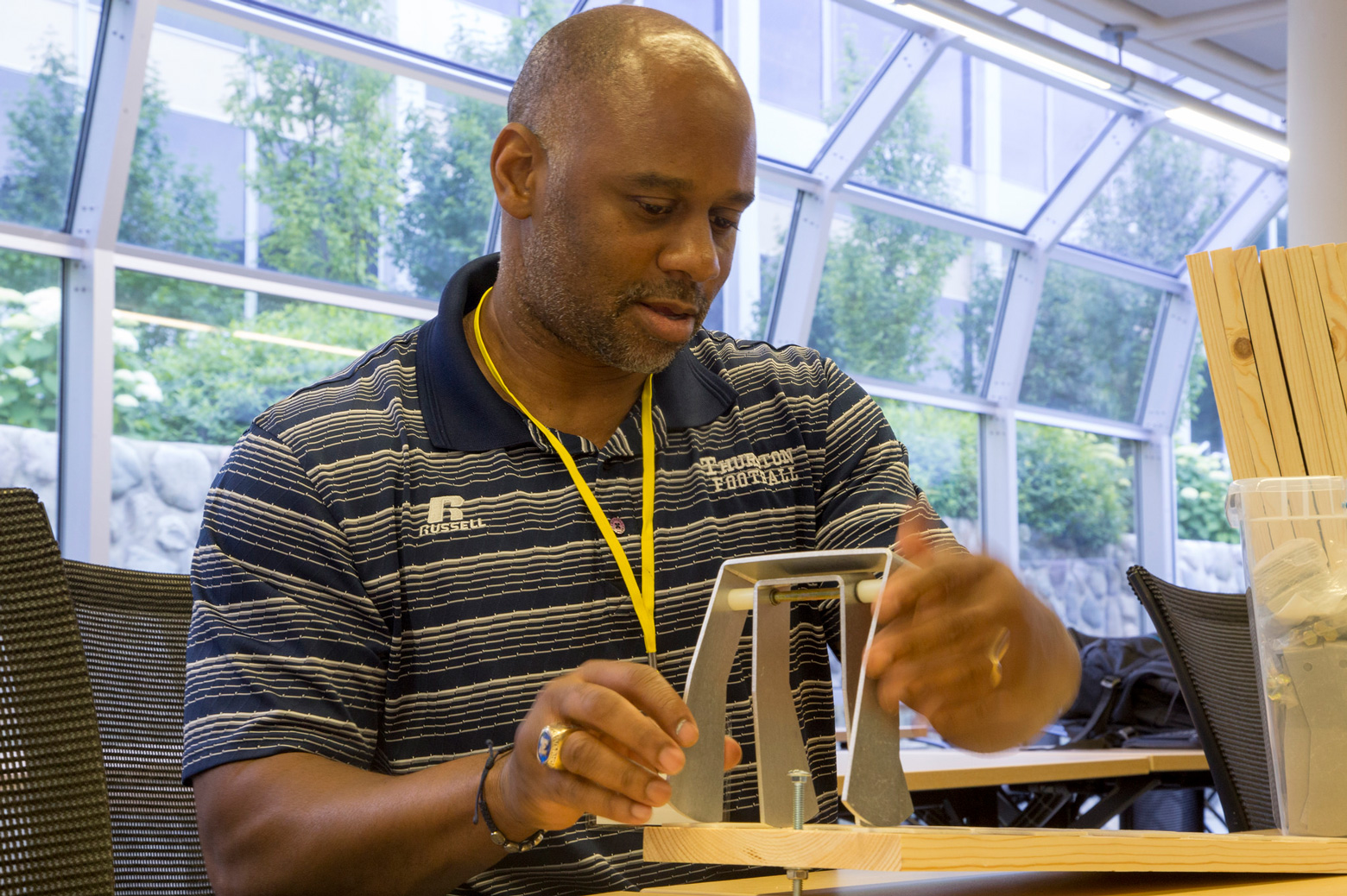
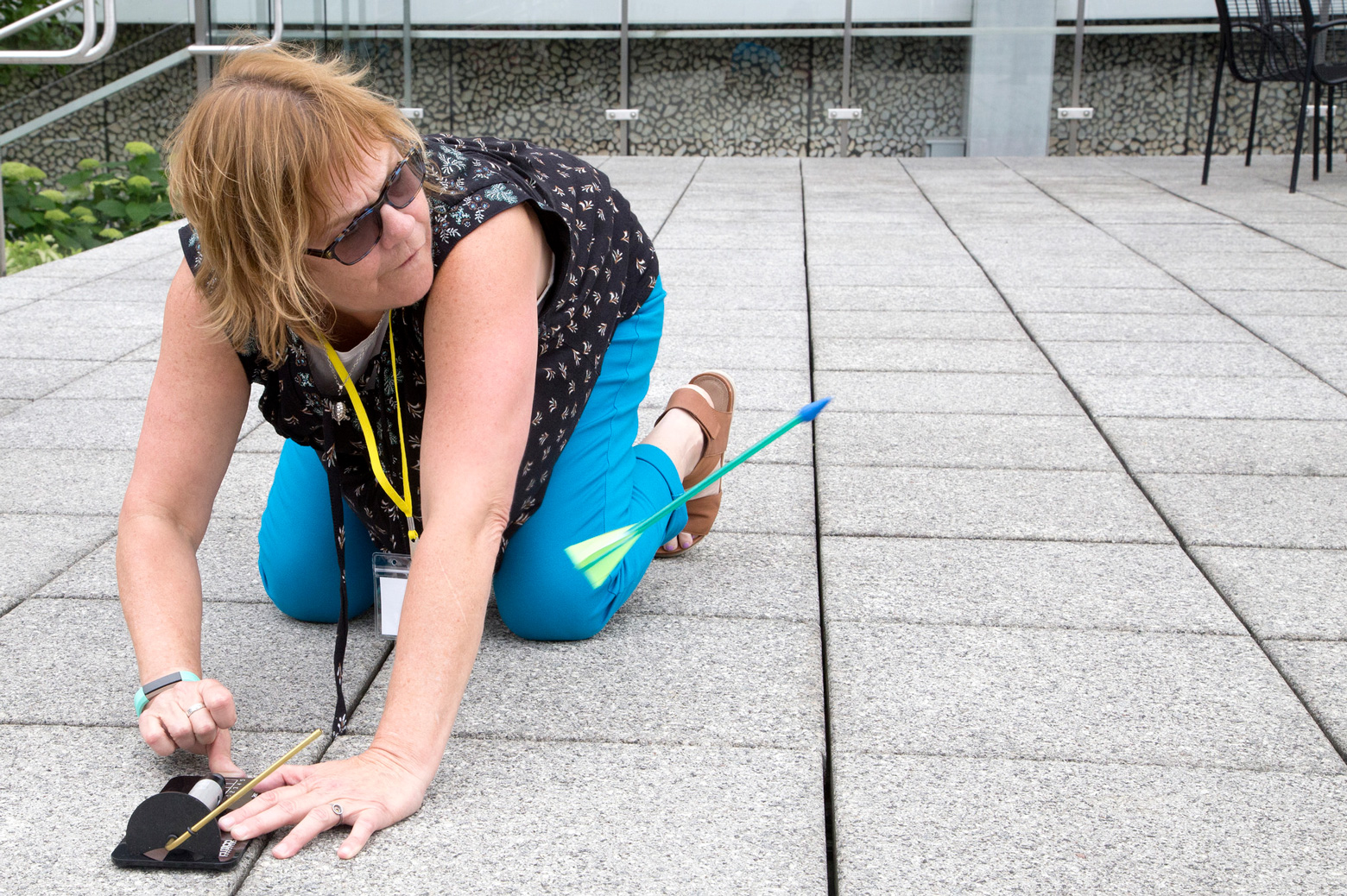
After returning from their tours, teachers stayed with their content groups to learn new activities from student volunteers. Each volunteering group prepared two activities, including lesson plans, background information and supply kits, for the teachers to take back to their classrooms. All lesson plans are available for download on the REACT website and every activity (except Holograms) can be done for around $50.
The activities were:
Grades K-4:
- Materials Science and Engineering – led by Ben Swerdlow (Materials Science and Engineering, Glotzer Lab)
- Smart Materials
- Sweet Sweet MSE – Breaking chocolate to explore its crystal structures, growing sugar crystals, and harnessing the elasticity of Jolly Ranchers
- Environmental Sciences
- The Changing Colors of Leaves
- Whose Butt? and Animal Identification – with students from Prof. Nyeema Harris’ Michigan ZoomIN project
Grades 5-8:
- Climate and Space Sciences – with Ben Alterman (Climate and Space Science, Kasper Lab)
- Air Pressure Straw Rocket Launch
- Electrical Engineering – with Akshay Sarin (Electrical Engineering, Hoffman Lab))
- Holograms
- Pinky-Powered Photons
- Robotics – with Will LePage, Nils Smit-Anseeuw or Wame Dosunmu-Ogunbi (Mechanical Engineering, Daly/Remy/Okwudire Labs, respectively)
- Mechanical Passive Dynamic Walkers
- Motion and Programming
Grades 9-12:
- Chemical Engineering – with Joanne Beckwith (Chemical Engineering, Solomon Lab) and Claire Tomaszewski (Biomedical Engineering, Shikanov Lab)
- Hydrogels
- Toothpaste
- Human Genetics – with Christina Vallianatos (Human Genetics, Iwase Lab)
- DNA Extraction from Saliva
- The PTC Taste Test
- Physics – with Xiyu Du and Bradley Dice (Physics, Glotzer Lab).
- Magnetic Trains
- Marble Roller Coaster
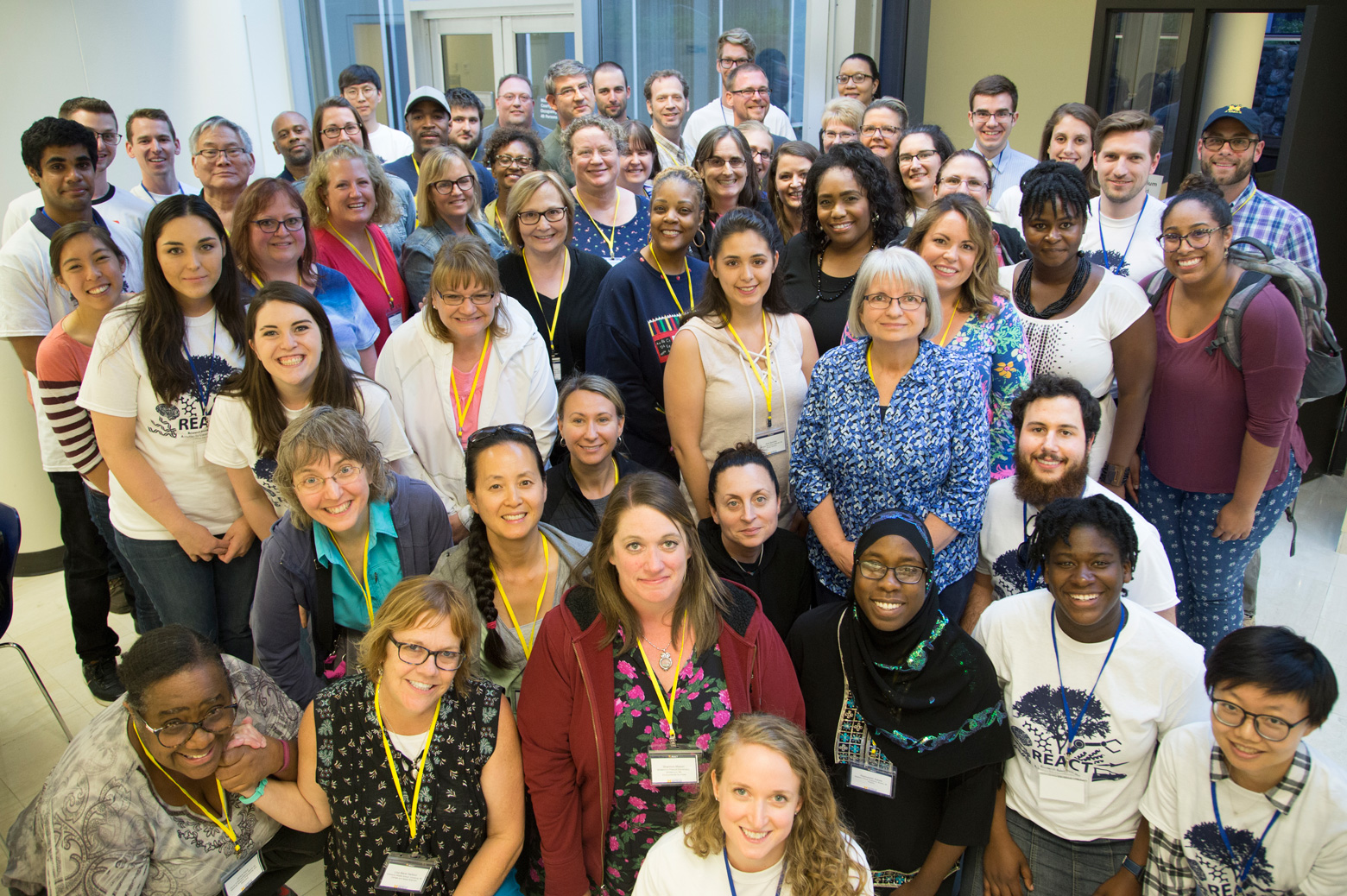
 Enlarge
Enlarge
“Next year we plan to maintain the wide geographic diversity of the teachers participating in REACT and are excited about involving graduate students from even more departments on campus to represent the breadth of research being done at U-M,” says Travitz, who will serve with Muniz as the lead coordinators for REACT 2019.
REACT 2018 was sponsored by the Center for Educational Outreach, CELL-MET, the Macromolecular Science and Engineering Program, the Biointerfaces Institute, Electrical Engineering and Computer Sciences, Climate and Space Sciences and Engineering, the Physics Department, the School for Environment and Sustainability, Chemical Engineering, ACS POLY/PMSE, Huron Valley ACS, and over 25 professors across the University.
These professors are: Amit Misra, Ariella Shikanov, Ashwin Shahani, Chinedum Okwudire David Remy, Diane Robins, Geeta Mehta, Greg Thurber, Jennifer Ogilvie, Jinsang Kim, Joan Greve, Jun Li, Justin Kasper, Mark Moldwin, Max Shtein, Michael Solomon, Miriam Meisler, Mosharaf Chowdhury, Nyeema Harris, Ron Larson, Sally Camper, Sharon Glotzer, Stephen Forrest, Susan Hammoud, Susan Lepri, Thomas Wilson, and Tulga Ersal.
Written by Rose Cersonsky, Alyssa Travitz, and Ayse Muniz

 MENU
MENU 
